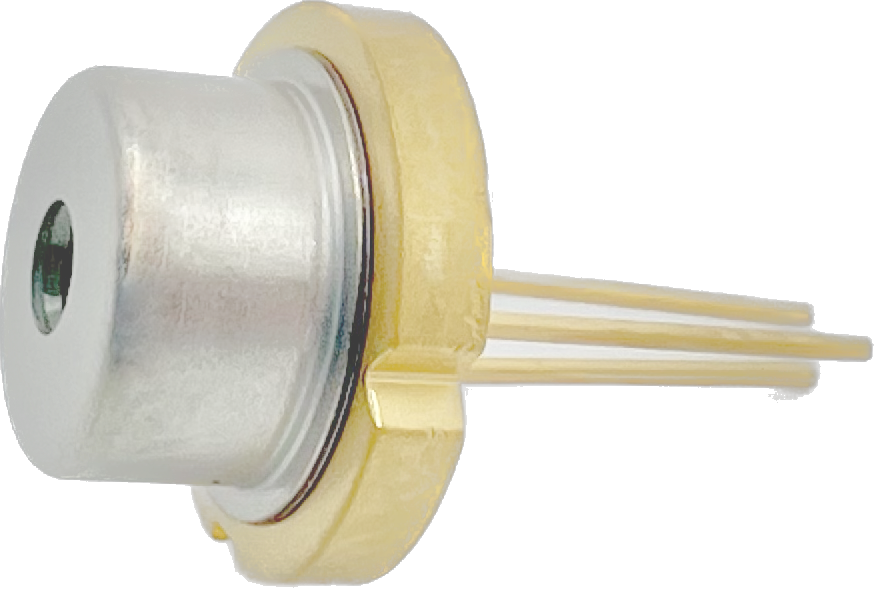Laser Diodes
About Laser Diodes
- Common laser diodes in general do not produce round output beams, due to the way that they are fabricated in a planar arrangement.
- The output facet of the diode chip is where the beam is emitted and is most often thin and wide. A diode typically has a vertical (fast-axis) thickness in the range of 0.5-1.5 µm, whereas in the horizontal direction (slow-axis) the thickness typically ranges from a few tens of microns for visible laser diodes to hundreds of microns for pump diodes.
- Because smaller apertures have larger divergences than thick ones, the diode output beam has a very rapidly diverging vertical output beam, and a much slower diverging horizontal beam, shown as θf and θs in the diagram to the bottom left.
- Even after collimation of the fast axis, it is difficult to maintain any aspect ratio as the beam propagates.
- For this reason, DPSS lasers such as our MiniGreen or MicroGreen are often chosen instead because they emit perfect round beams that maintain their circularity propagating away from the laser.




About TO Laser Packages
When lasers were in their infancy, circularly symmetric metal packages known as transistor outline (TO) packages were developed for the electronics industry. As laser diode powers increased in magnitude, three primary TO packages were adopted by the laser diode industry to package single diodes in standard packages with diameters of 3.8, 5.6, and 9.0 mm, shown in the photos above.
Main Uses Of TO Laser Packages
The three TO packages shown above are primarily used to house single laser diodes, with the higher power diodes primarily installed in the 9 mm TO Package. In a related application, APS invented installing small green diode-pumped solid-state lasers (DPSSL’s) into TO Packages, shown here.




